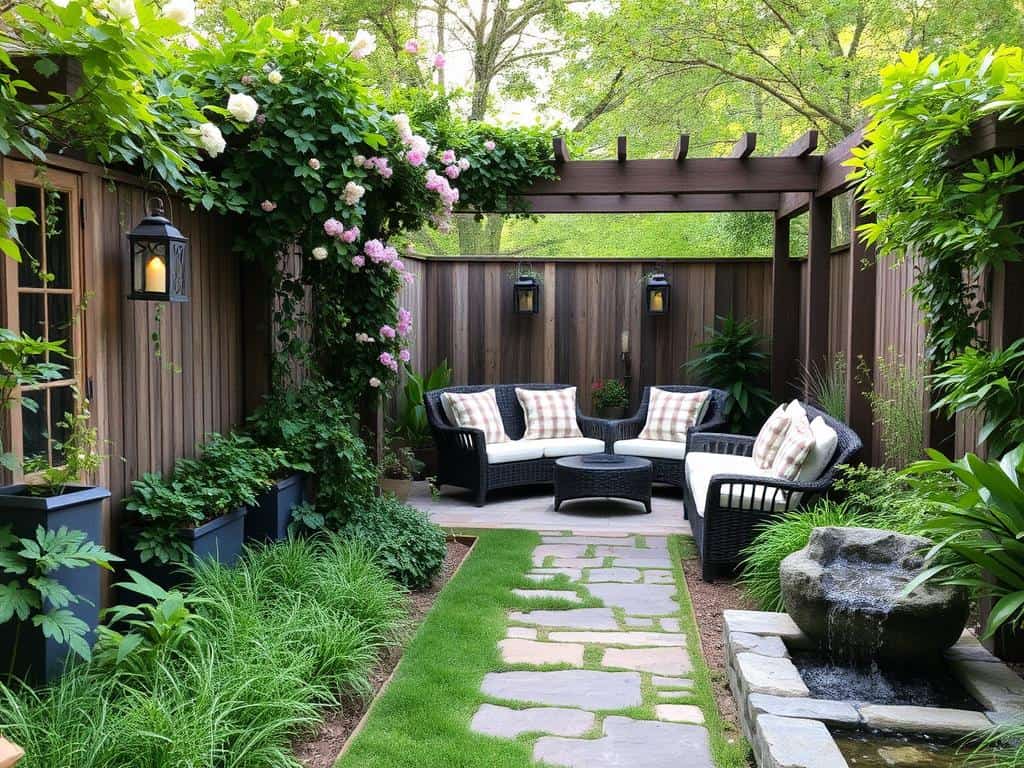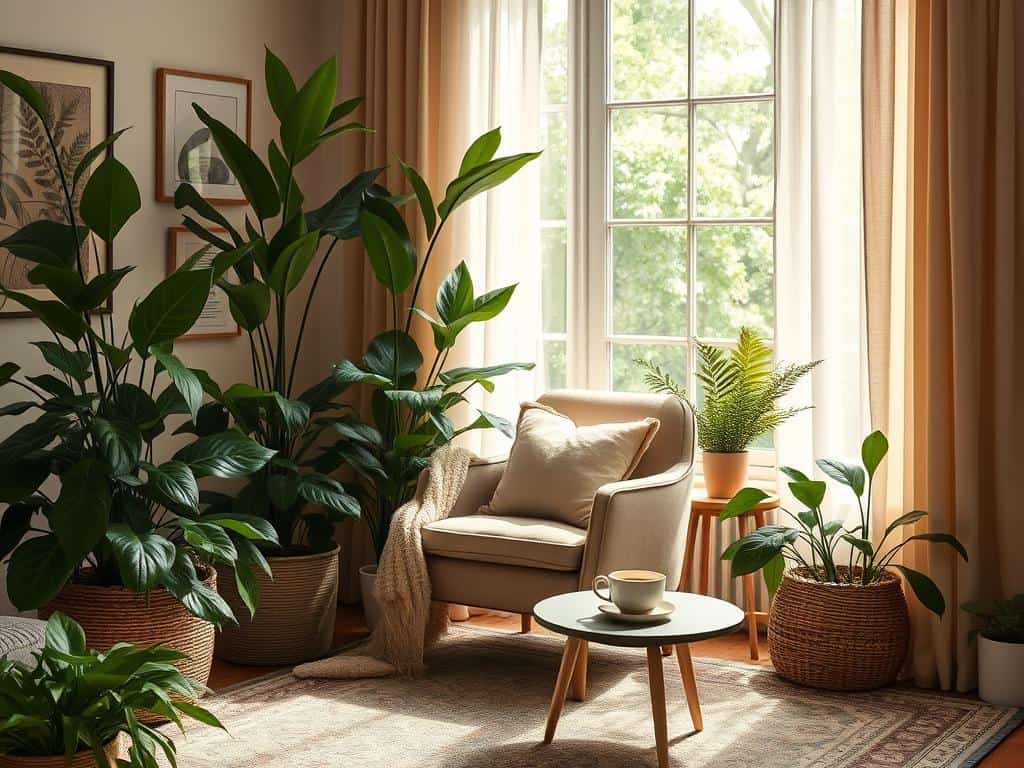In the midst of life’s hustle and bustle, we often find ourselves lost in noise and worries. I yearn for a sanctuary—a personal retreat in my home. The COVID pandemic made me realize how important a home retreat is for self-care and mindfulness.
Creating this space helps me find joy and peace. It can be as simple as a cozy corner in my living room or a guest bedroom turned into a relaxation haven. It’s a promise to myself to slow down, breathe, and connect with my inner self in today’s chaotic world.
Key Takeaways
- Creating a home retreat can span from one day to several, tailored to personal preference.
- Beginners may start with 20-30 minutes of daily meditation, aiming for multiple sessions.
- To maximize relaxation, it’s vital to minimize distractions and simplify daily tasks.
- Incorporating movement practices like yoga enhances overall retreat experience.
- Reading meditation teachings can provide inspiration and support throughout the retreat.
- Building a commitment and practicing with others can enrich the retreat experience.
Understanding the Concept of a Home Retreat
Creating a home retreat is key for nurturing the soul and boosting personal well-being. Home retreats give us a chance to step away from daily distractions. We can focus on creating a space filled with peace and joy. This is very helpful during tough times when stress and anxiety are high.
It lets us dive into meaningful spiritual practices. These practices help build emotional strength and stability.
Defining Home Retreats
Home retreats are a special way to grow and heal. They don’t need to be in a big place or for a long time. Instead, we can make our own homes into personal sanctuaries for thinking and refreshing.
These retreats can last from a few hours to a whole weekend. By setting clear goals and boundaries, we can make the most of them.
Benefits of Creating a Personal Sanctuary at Home
Having a personal sanctuary at home brings many benefits. Home retreats can improve our mental health, emotional balance, and self-understanding. They help us develop spiritual practices that bring positivity and joy.
These practices show our strengths and resilience when things get tough. By practicing calm, we can face life’s challenges better. This leads to a more rewarding and fulfilling life.
Setting Up Your Home Retreat for Maximum Relaxation
Creating a serene home retreat is more than just a comfy spot. It needs careful planning and a clear intention. Setting retreat boundaries is key, telling my mind and body it’s time to relax. I choose where my retreat will be, like a special room or a quiet corner outside.
It’s important to stay away from tech distractions. I keep devices out of sight and silence is a must. This helps me create a blissful environment.
The Importance of Defining Your Retreat Boundaries
Defining my retreat space brings deeper peace. It sets a clear boundary, showing my dedication to self-care. I aim to make a space that lifts my spirit and encourages deep thought.
This separation lets me dive into activities like art, meditation, or journaling. Knowing my retreat space helps me fully enjoy the rejuvenation.
Selecting the Right Space for Rest and Bliss
Choosing the right space for relaxation makes my retreat better. I pick places that feel calm, with lots of natural light and peaceful surroundings. Soft textures, uplifting decor, and nature elements add to the bliss.
Adding personal touches, like favorite books or plants, makes the space welcoming. With a special spot, my retreat becomes a transformative experience.

Practicing Mindfulness and Joy During Your Home Retreats
Creating a fulfilling home retreat experience starts with a good daily schedule. I make sure my routine is both organized and flexible. It’s designed to care for myself while leaving room for surprises.
Every day, I begin with meditation to calm my mind. I also enjoy mindful eating and walking meditation. These activities make my day richer and help me stay present.
Creating a Daily Schedule Focused on Self-Care
My day runs from 6:15 a.m. to 8:00 p.m., filled with various activities. Morning meditation sets a peaceful mood. Mindful eating lets me savor each meal.
I take breaks to relax and focus better. Walking meditation and intentional movement keep my body and mind in sync. This balance helps me connect with my surroundings and find peace.
Incorporating Mindfulness Techniques to Enhance Relaxation
Mindfulness techniques are key to my relaxation. I often practice mindful breathing to clear my mind. Listening meditation helps me connect with the present sounds, creating a calm space.
I also enjoy calming music or guided meditations during my retreats. Reflecting on my relationships and expressing gratitude adds to the joy of my retreat.
Conclusion
Creating a home retreat is more than just setting up a space. It’s about making a promise to find peace and joy in my life. By practicing mindfulness and taking care of myself, I turn simple moments into deep, soul-nourishing experiences. Knowing I can find retreat anywhere gives me the power to keep growing and learning.
Setting boundaries and choosing the right space are key to building my sanctuary. This careful planning makes my retreat not just a special time, but also a part of my everyday life. It brings calm and connection with myself into my daily routine.
By planning well and adding mindfulness and downtime, my home retreat becomes a powerful tool for change. It shows that with effort and reflection, I can make a space where peace and joy thrive, even in busy times.



